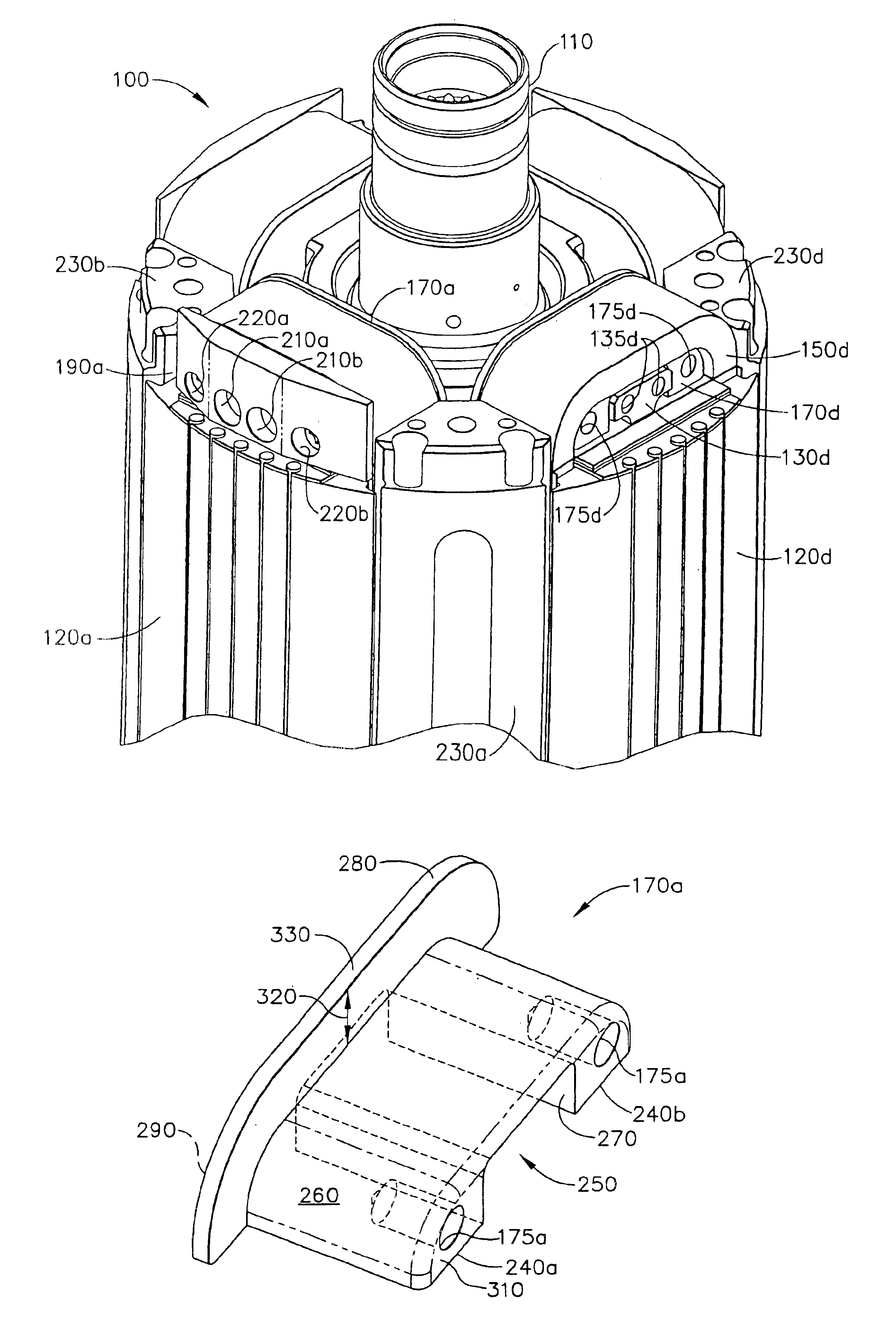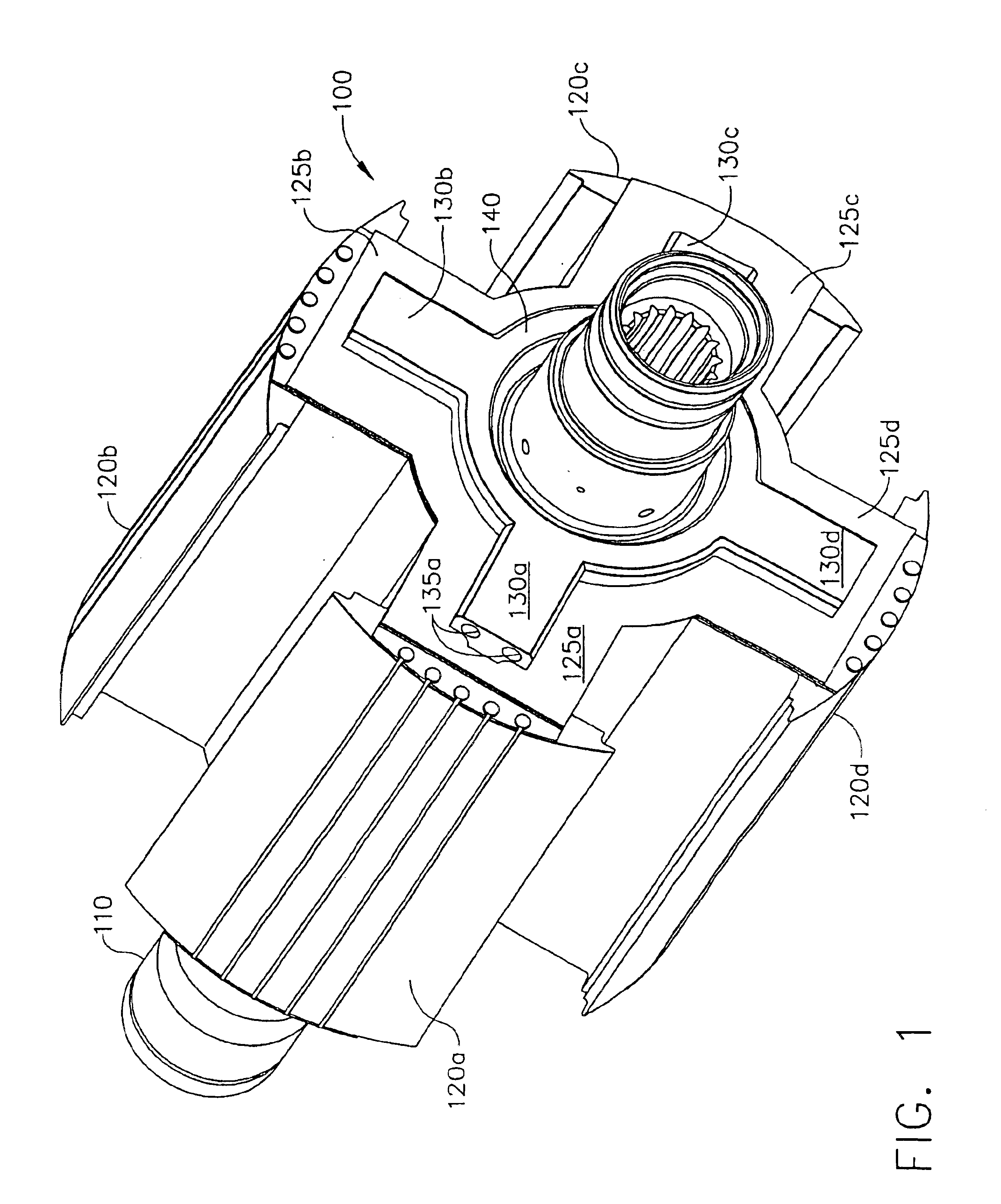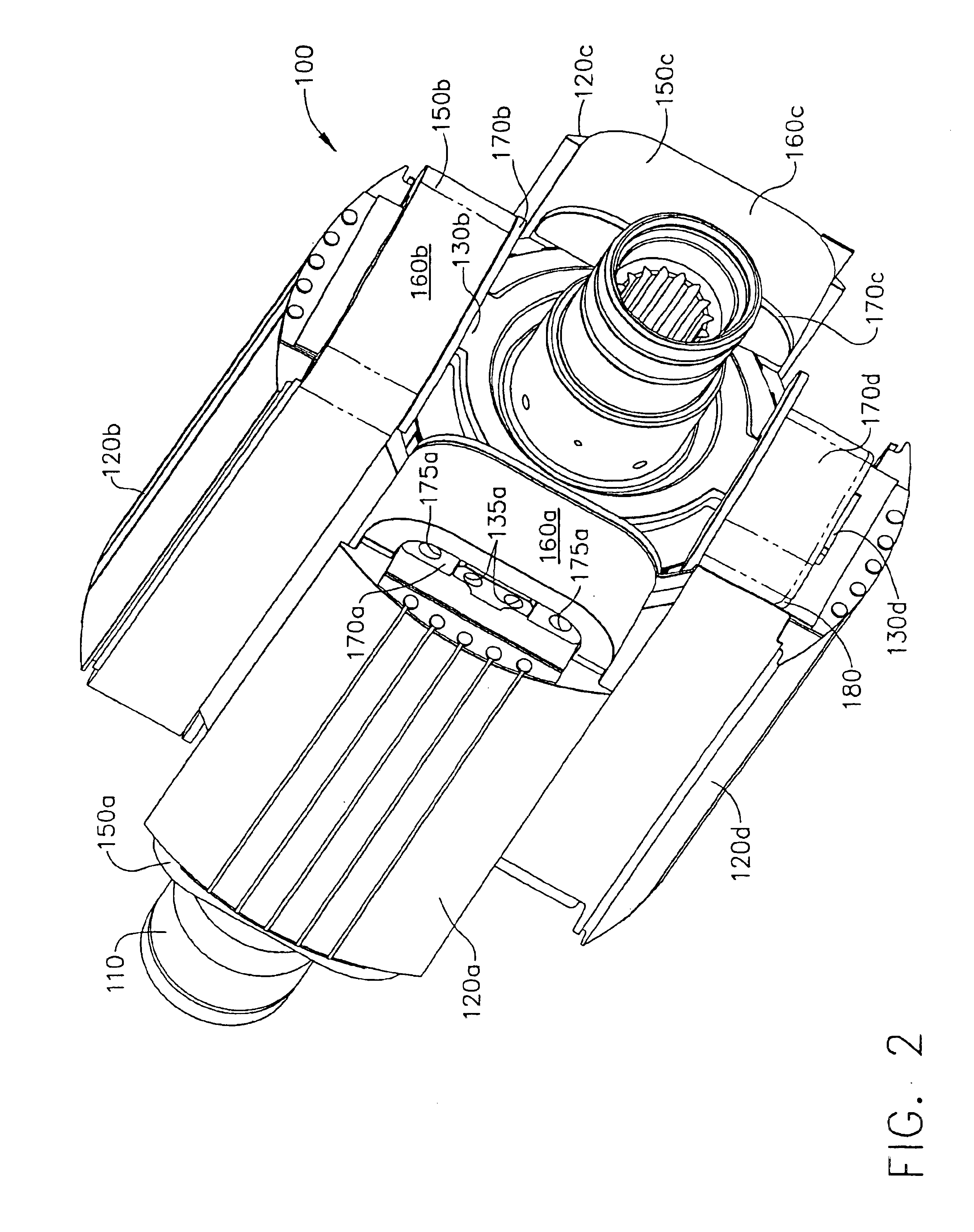System and method for end turn retention on a high speed generator rotor
a technology of end turn retention and high-speed generator, which is applied in the direction of dynamo-electric machines, magnetic circuit rotating parts, magnetic circuit shape/form/construction, etc., can solve the problems of mechanical breakdown of wires, inefficiencies in the operation of generators, and risk of generator failure, so as to simplify the wrapping process and improve the balance of rotors. the effect of robustness
- Summary
- Abstract
- Description
- Claims
- Application Information
AI Technical Summary
Benefits of technology
Problems solved by technology
Method used
Image
Examples
Embodiment Construction
Referring to FIG. 1, components of an exemplary rotor 100 on which the present invention can be employed include a shaft 110 extending axially through the rotor, four poles 120a-d that extend radially away from the shaft 110, and four spokes 130a-d that extend radially away from the shaft 110 at a hub location 140. The spokes 130a-d are radially aligned with, and coupled to, end faces 125a-d of the poles 120a-d, respectively. As discussed further below, each of the spokes 130a-d respectively includes one or more threaded holes 135a-d (only holes 135a are shown in FIG. 1). The rotor 100 presently shown is designed for implementation in high speed generators such as those commonly employed in aircraft. Consequently, the components of the rotor 100 are typically manufactured from high-strength materials. For example, the poles 120a-d can be formed from steel, while the shaft 110 and the spokes 130a-d can be formed from steel, titanium or high-strength aluminum. It will be appreciated, ...
PUM
 Login to View More
Login to View More Abstract
Description
Claims
Application Information
 Login to View More
Login to View More - R&D
- Intellectual Property
- Life Sciences
- Materials
- Tech Scout
- Unparalleled Data Quality
- Higher Quality Content
- 60% Fewer Hallucinations
Browse by: Latest US Patents, China's latest patents, Technical Efficacy Thesaurus, Application Domain, Technology Topic, Popular Technical Reports.
© 2025 PatSnap. All rights reserved.Legal|Privacy policy|Modern Slavery Act Transparency Statement|Sitemap|About US| Contact US: help@patsnap.com



